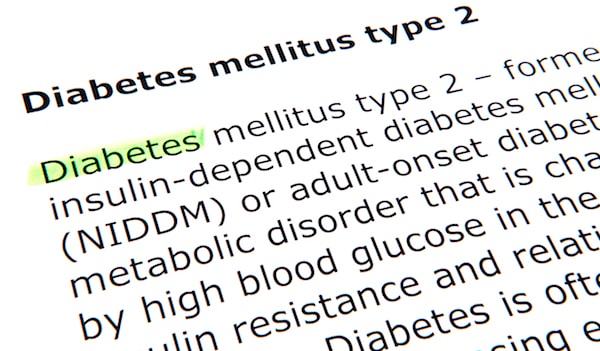
According to an estimate from the FDA, one in three Americans will develop type 2 diabetes during their lives. As of 2014, nearly 10\\% of the American population was living with the disease. Type 2 diabetes is a chronic condition that impacts the way your body metabolizes sugar (glucose) AKA an important source of fuel for your body. With type 2 diabetes, your body either resists the effects of insulin (a hormone that regulates the movement of sugar into your cells) or doesn't produce enough insulin to maintain normal glucose levels. Type 2 diabetes starts with resistance to insulin. Since insulin regulates the level of blood sugar in the body, a person with the condition can be subject to periods of low and high blood sugar. A resistance to insulin can lead to Type 2 diabetes as well as the need to regulate blood sugar levels on a daily basis. The disease is often found in people that are overweight. Since there are a large number of overweight people that have Type 2 diabetes, many of them consider having liposuction to remove fat cells from the body.
Symptoms of Type 2 Diabetes
The signs and symptoms of Type 2 diabetes take time to develop. It's possible to have Type 2 diabetes for years and not know it. Some of the significant symptoms include:
Complications of Type 2 Diabetes
It is easy to ignore Type 2 diabetes and this is especially true in the early stages when the symptoms aren't very evident. Once a patient becomes symptomatic, the condition impacts many major organs including the heart, blood vessels, nerves, eyes and kidneys. Controlling the blood sugar levels can help prevent these complications. Although the long-term complications of the condition are gradual, they can become disabling or even life-threatening. Some of the potential complications of diabetes include:
How to Prevent Type 2 Diabetes
Patients can prevent Type 2 diabetes with healthy lifestyle choices. Patients that have already received a diagnosis of Type 2 diabetes can use healthy lifestyle choices to help prevent complications. If patients have pre-diabetes, lifestyle changes can slow or stop the progression of diabetes. A healthy lifestyle includes:
Liposuction and Type 2 Diabetes Patients
The decision about whether or not liposuction is safe for diabetics can sometimes be hard to make. Liposuction is sometimes listed as a condition that is too dangerous for diabetics to undergo because:
However, many physicians consider liposuction safe for diabetics if certain conditions are met:
For patients who are concerned about surgery, or who have diabetes that is less controlled, SmartLipo is a good option to break down fat cells under the skin through the use of a laser that liquefies the fat
Patients with diabetes should consult with a board-certified doctor before making the decision to undergo liposuction. The doctor can perform a complete physical examination of the patient to determine the current state of the diabetes condition. The doctor can also determine if diabetes will impact the patient to the point that the surgery is too dangerous to perform.